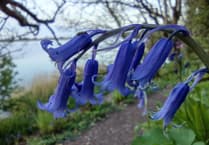Trawling is a common method of fishing in UK waters.
Trawl nets are shaped like a funnel with a wide opening to catch fish or crustaceans and a narrow, closed end. In midwater trawling, they are towed by a boat through the water column.
However, in bottom trawling they are pulled along the seabed to catch bottom-dwelling fish, using heavy metal weights to keep the net on the seafloor, crushing everything in its path.
Dredging is another fishing method using bottom-tow gear, dragging a heavy steel frame with chains and sometimes metal teeth to penetrate the sediment of the seafloor, ripping up or smothering everything living and growing as the seabed is turned over. Sediment plumes from bottom trawling and dredging can be seen from space.
Bottom fishing and dredging are indiscriminate, catching many non-target species, referred to as bycatch.
They not only remove individual species but whole communities including juvenile fish, invertebrates and marine vegetation like sea corals and grasses, destroying the fish nurseries, food and shelter that are necessary for fish populations to recover.
The practices deplete the whole marine ecosystem with a devastating impact on the biodiversity of the sea including seabirds and mammals such as dolphins and porpoises.
Delicate habitats and plants that can take hundreds of years to establish are wiped out in an instant.
Simple habitats like sandy areas are thought to be more resilient, however bottom trawling is so common we do not know the natural state of the seabed and what species or abundance it could support. Many parts of the seabed are exposed to at least one pass of a trawl every year.
Marine sediments are the world’s largest carbon store, safely storing carbon in the seafloor for millennia. When the seabed is disturbed, the carbon is released from the sediment into the water. Half of this carbon released by bottom trawling and dredging will escape into the atmosphere as CO2 within a decade, contributing to global warming. Scraping up the seafloor is as destructive as destroying rainforests.
Lord Deben, former Conservative Minister for the Environment and recent Chair of the Climate Change Committee, says: “We should ban bottom-trawling. It is utterly unacceptable that we should be cutting up the bottom of the sea, releasing the carbon from it and making it less able to take carbon in, and at the same time destroying the food chain upon which the fish in the end depend.
“We need to make it illegal, and we need to have an international agreement that bottom trawling is unacceptable anywhere in the world.”
In 2023, the UK signed the Global Ocean Treaty to protect at least 30% of the ocean by 2030 to slow the destruction of the natural world. The UK Government increased the number of Marine Protected Areas to protect vital ecosystems like fish nurseries and protected species like porpoises and dolphins. Yet bottom trawling is only banned in 5% of the UK’s Marine Protected Areas.
The Government continues to issue fishing licences for UK and EU vessels allowing them to bottom trawl in most Marine Protected Areas. Conservationists say that allowing these damaging practices in Marine Protected Areas is equivalent to bulldozing a national park on land. An immediate ban on bottom trawling and dredging in all our Marine Protected Areas is essential to restore and protect UK marine ecosystems.
The Government provides diesel subsidies of more than £150 million a year to the UK fishing fleet, representing 15% of the industry’s income.
Bottom trawling and dredging are fuel-intensive, requiring large powerful boats to drag the weighted fishing gear along the seafloor. Without these tax breaks, industrial fishing methods like trawling and dredging would be unprofitable. These subsidies could be redirected to help the fleet transition to low carbon fuels and adopt more sustainable fishing practices.
Lyme Bay was the first large-scale Marine Protected Area in Britain to protect its whole area from bottom-trawling and dredging. Previously, large dredging boats used to hoover up scallop along the Jurassic coast, until the cold-water reefs were destroyed. In 2008, 80 square miles, later extended to 120 square miles, were protected. Pink sea fans have returned, and the number of species increased by 39% by 2021, showing that recovery is possible over time and with protection.




